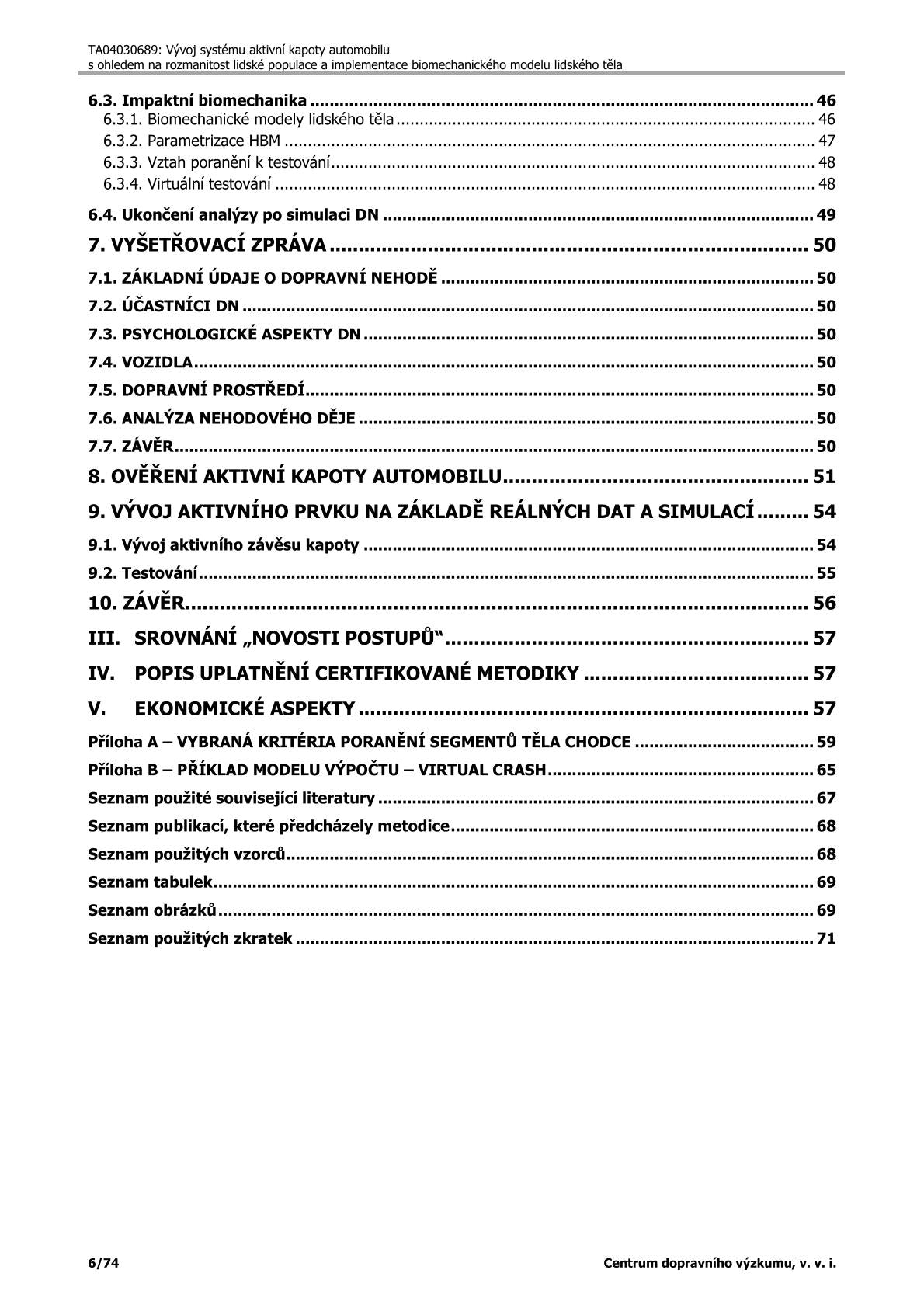Printed publication
Methodology of data collection and analysis for the evaluation of injuries of participants in traffic accidents with regard to active elements in vehicles
Methodology of data collection and analysis for the evaluation of injuries of participants in traffic accidents with regard to active elements in vehicles
Couldn't load pickup availability
The methodology is intended for designers of road vehicles and analysts who deal with the collection and evaluation of data from traffic accidents in relation to the design of new elements in vehicles. The core part of the methodology is devoted to the collection of data from the scene of a traffic accident following the injury of a participant in the accident (specifically a pedestrian). Part of the text is devoted to the analysis of passive and active safety with the aim of identifying the degree of influence on the course of the accident mechanism. In the conclusion, one element of the vehicle's passive safety, the active hood, and its influence on the course of the accident is discussed.







Detail
Author
- Striegler R.
- Gogolin O.
- Motl J.
- Novak J.
Content
I. OBJECTIVE OF THE METHODOLOGY
II. OWN DESCRIPTION OF THE METHODOLOGY
1. MECHANISM OF A TRAFFIC ACCIDENT
1.1. Components of a traffic accident
2. HUMAN SAFETY
2.1. AIS - Abbreviated Injury Scale
2.2. ISS - Injury Severity Score
3. VEHICLE SAFETY
3.1. Active vehicle safety
3.3. A combination of active and passive vehicle safety
3.4. Autonomous vehicle systems
4. SECURITY OF THE INFRASTRUCTURE
5. TRAFFIC ACCIDENT INVESTIGATION
5.1. Research data
5.2. Chronology of the progress of activities at the scene of a traffic accident
5.3. Accident statistics
6. TRAFFIC ACCIDENT SIMULATION
6.1. Calculation model – Virtual Crash
6.2. CALCULATION MODEL – PAM-CRASH
6.3. Impact biomechanics
6.4. Termination of analysis after DN simulation
7. INVESTIGATION REPORT
7.1. BASIC DATA ON A TRAFFIC ACCIDENT
7.2. PARTICIPANTS OF THE DAY
7.3. PSYCHOLOGICAL ASPECTS OF THE DAY
7.4. VEHICLES
7.5. TRAFFIC ENVIRONMENT
7.6. ANALYSIS OF THE ACCIDENT
7.7. CONCLUSION
8. VERIFICATION OF THE ACTIVE BONNET OF THE CAR
9. DEVELOPMENT OF THE ACTIVE ELEMENT BASED ON REAL DATA AND SIMULATIONS
9.1. Development of an active hood hinge
9.2. Testing
10. CONCLUSION
III. COMPARISON OF "NEW PROCEDURES"
IV. DESCRIPTION OF THE APPLICATION OF THE CERTIFIED METHODOLOGY
V. ECONOMIC ASPECTS
Appendix A - SELECTED PEDESTRIAN BODY SEGMENT INJURY CRITERIA
Appendix B - EXAMPLE OF CALCULATION MODEL - VIRTUAL CRASH
Dedication
This methodology was created with the state support of the Technology Agency of the Czech Republic as part of the ALFA Program, as part of the project TA04030689 Development of an active car hood system with regard to the diversity of the human population and the implementation of the biomechanical module of the human body.
www.tacr.cz
Colophon
ISBN 978-80-88074-37-3
Year of publication
2016






